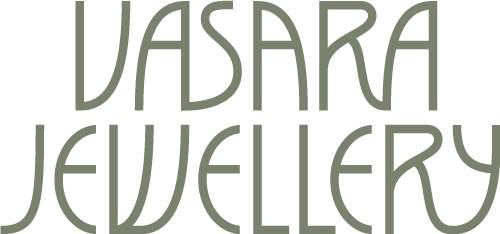Readings
An annotated bibliography of publications relating to Baltic jewellery
My interest lies primarily with Baltic jewellery of the past, a form of wearable art which is intricately linked with the costumes of particular areas and epochs. To understand the jewellery, its function and its meaning, one must look beyond the ornament and delve into history .
This is an informal listing of some of the works which I have found inspiring and informative. As I speak English, Latvian and German, my focus is limited to texts in those languages. Let me know of other great references, particularly Lithuanian and Estonian publications from which non speakers can benefit.
1. Radiņš, Arnis. Arheoloģisks ceļvedis latviešu un Latvijas vēsturē.
Neptuns, Rīga 2012. Written in Latvian.
A most comprehensive and beautiful book which features a great deal of Latvian jewellery. A translation of the title reads “An archeological roadmap of the Latvian people and Latvia”. It is written by the Director of the Latvian National History Museum, Arnis Radiņš and it is informative, readable and attractive with images on every page. It includes a huge bibliography relating to all aspects of history and archeology of jewellery (and the other aspects of Latvian history covered in this wonderful publication). The book includes many beautiful Latvian National History Museum’s images, which are now so well known. This is my go-to bible .
Check the LNVM Ziņnesis August 2012 edition for a description.
This is a large, heavy, hard-covered book of 414 pages. Online ordering and delivery was reliable and surprisingly quick and relatively cheap, especially as it had to cross the world from Latvia to Australia. Ordering from Jānis Roze bookshop worked for me.
2. Zariņa, Anna. “Apģēŗbs Latvijā 7. - 17. gs.” (Zinātne, Rīga 1999) 159 pages.
Anna Zariņa devoted her working life to ethnographic archeology, focusing on textiles. She was born in 1921 and, regrettably, died in March 2015. She published much academic research since the 1950's. Her book Apģerbs Latvijā 7. - 17. gs, “ Costume in Latvia 7th - 17th Century” is written in Latvian with 10 summary pages in German.
Zariņas book covers 1,000 years of Latvian folk costume: it is both thorough and readable. There is also plenty of information on jewellery along with many black and white illustrations, and lovely coloured images in the middle. I borrowed a copy, as it is out of print, as far as I could find. Let me know if a hard copy is available, as I'd love to add it my library.
Here's a summary in Latvian, which recommends the book to “Archeologists, historians, teachers, master artisans, and everyone who is interested in the cultural history of the Latvian people”.
3. Celms, Valdis. “LATVJU RAKSTS UN ZĪMES. BALTU PASAULES MODELIS, UZBŪVE, TĒLI, SIMBOLIKA”.
Folkloras Informācijas Centrs, Rīga 2011. 272 pages, hardcover. Written in Latvian.
A translation of the title could read “ Latvian patterns and symbols. A Baltic Model. Structure. Characters. Symbology.” This book is not about jewellery. It is, however, a comprehensive study of the symbols which are an intricate part of all Latvian applied arts, including jewellery. These symbols influence the form and the decoration of Latvian folk design, including my own work.
This recently published and readily available book may be the most complete study of Latvian symbols to date. Celms’ research goes right back to the origins of symbology, it gives insights into the international origins of the Latvian symbols and then moves into analyzing and categorizing each symbol. He offers interpretations of each symbol and backs up interpretations with illustrations, images and examples of the haiku-like Latvian folk songs called “Dainas”.
I would imagine that practical academics may take issue with some of Celms’ esoteric theories. However, the realm of ancient symbols is by its nature mysterious and imprecise. I would certainly recommend this book as essential to anyone wanting to study Latvian symbology and folklore.
Probably a little inaccessible if you don't read Latvian.
4. Žeitere, Irita “Arheoloģiskais tērps. Tā darināšana, valkāšana un komplektēšana mūšdienu Latvijā”. Latvian National Culture Centre, 2017. Soft cover, 135 pages.
I love this book! If you are looking for a non-cluttered, yet comprehensive summary of everything pertaining to the gorgeous costumes of pre 16th Century Latvia, get this book. It has been written in collaboration with the Latvian National History Museum and you will recognize some of the beautiful photos from recent government publications. The book is, in fact, full of clear photos and illustrations, obviously targeting people who are keen to make their own ancient Latvian costume. There is even an amusing section illustration common mistakes to avoid. The huge amount of iconic metal adornment worn by ancient Latvians is clearly shown in three ways: hand drawings to emphasize design detail, photos of actual pieces found in archeological digs, and photos of jewellers’ faithful reproductions.
The book is in Latvian, but there is a comprehensive 16 page summary in English where the title is translated as “Archaelogical Dress: Making, Wearing and Assembling it in Present Day Latvia”. In fact, even if you have no, or little, Latvian, I suggest you will still get a lot from this publication because it is so clearly laid out, and visually so well supported.
5. Nadziņa, Valija “Etnogrāfiskais ornaments 2”. Zvaigzne ABC. Soft cover, 24 pages. No publishing date, maybe around 2014?
This book is about Latvian symbols and it packs a great deal of information into its 24 pages. It’s written in Latvian, but its clear layout and many illustrations make it valuable also for non-Latvian speaking artisans. It starts with drawings and explanations of the key Latvian symbols, then moves onto how these symbols are varied and combined, and then finishes with how the symbols are linked into compostions. Although the book’s focus is on textile application, the learnings can, of course, be applied to any medium.
Highly recommended for beginners, and an E-book is available for a very small cost.






